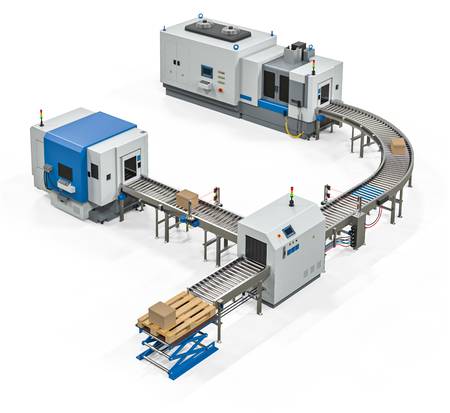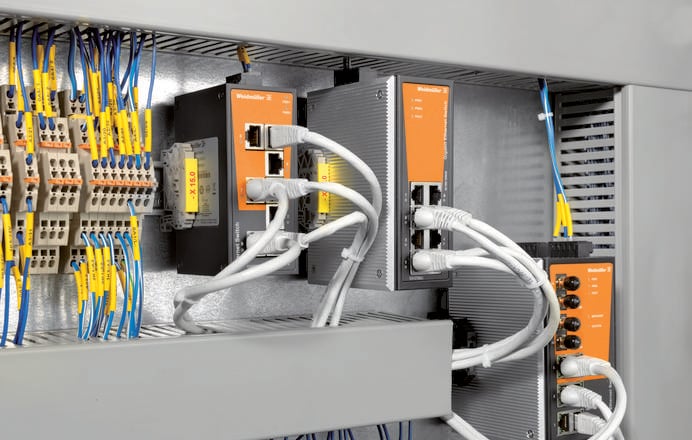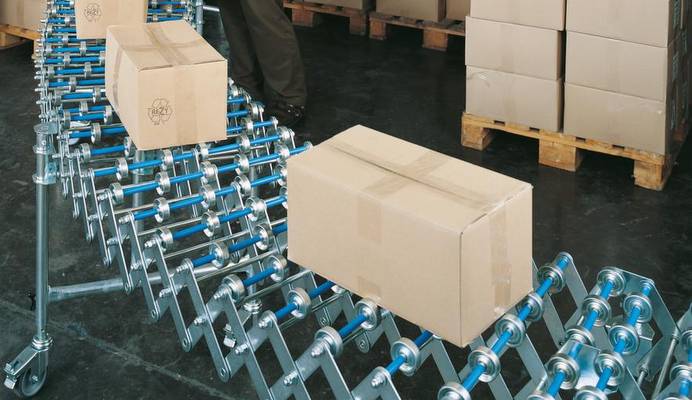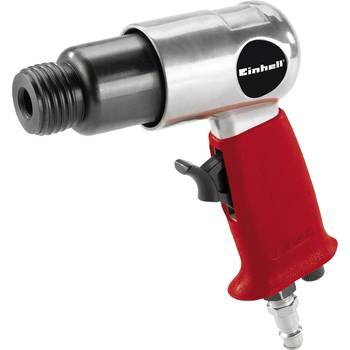All products
Highlights
Guide
This text is machine translated.
Things to know about automation & pneumatics
A high level of industrial automation is the key to ensuring that an economy can remain competitive on a global scale. In our guide, we provide you with an overview of which types of automation are particularly important and what role pneumatics and materials handling technology play in this.
-
Automation has changed the economy
-
Conveyor technology moves
-
Advantages and possible applications of pneumatics
-
Functionality of pneumatic systems
-
Our practical tip: Clean filters regularly during compressed air preparation
-
FAQ - frequently asked questions about automation and pneumatics
Automation has changed the economy
Automation has fundamentally changed the world of work. Many heavy tasks that once had to be laboriously done by hand are now taken over by machines. The introduction of automation was also the cornerstone of the industrial revolution. Intelligent process optimization allows production chains in companies to become significantly more effective, ultimately saving money.
The quality of products is also significantly improved by a high degree of automation: For example, a robot can perform a weld seam much faster than a human. In addition, the quality remains absolutely constant even after the hundredth seam. Machines can work around the clock without fatigue, while maintaining the same quality. As a result, the role of the human being has changed from that of a worker to that of a controller who monitors the correct running of processes.
Automation is taking place in almost all areas of industry: starting with drive technology, through measurement and control technology, to conveyor technology and pneumatics. In the course of the development towards Industry 4.0, the focus in the future will be on an even closer interlinking of automation systems and information technology, which will further increase efficiency and certainly also result in new innovations.
Conveyor technology moves
What would airports, large mail order companies or parcel service providers be without conveyor belts? In the field of process automation, conveyor technology is a key technology. Without it, industry would literally stand still.
The collective term conveyor technology refers to conveying equipment whose purpose is to transport piece goods or bulk materials. This starts with the simple chain hoist and extends to highly complex conveyor lines in the logistics sector. Corresponding technical equipment is of elementary importance for the control of an unhindered material flow in the production environment.
For example, conveyor technology ensures that mined bulk material is transported from the extraction site and that automated production lines function at all.
In addition to conveyor belts and roller conveyors, materials handling technology also includes floor conveyors such as lift trucks or forklifts.
Advantages and possible applications of pneumatics
The term pneumatics refers to the harnessing of compressed air with the aim of performing mechanical work. The technology is used in many areas, including construction machinery and robotics. Pneumatics can be used almost anywhere, as the required air is simply taken from the environment. In addition, pneumatics is very clean: since only compressed air is used, even damage to the pneumatic lines or cylinders is not critical for the environment. The required air can simply escape from the system into the environment after use; cleaning is not necessary.
Since air is used as the medium, pneumatic components can also be used in particularly sensitive environments such as the food industry without any problems. Contamination by escaping liquids is not possible. In general, technologies based on pneumatics are considered to be robust and durable and also inexpensive to purchase. Pneumatic systems are particularly resistant to environmental influences, such as temperature fluctuations, and usually do not suffer any damage if components are overstressed or fail. In addition, their force can be continuously controlled. Last but not least, a machine powered by pneumatics is lighter than a comparable device with an electric motor.
Functionality of pneumatic systems
For a pneumatic system to function, the first step is to generate compressed air. This is done with a compressor that sucks in and compresses the ambient air. Pressures between 6 and 40 bar are used in pneumatics. In modern plants, the heat generated in large quantities during the production of compressed air can be used, among other things, as heating energy or to produce hot water. The compressed air coming out of the compressor must be treated in a further step. Various filters clean the air of any solid particles that may be present. In addition, it may be necessary to remove moisture from the air to prevent the pneumatic components from corroding due to precipitating water vapor when temperatures drop.
If the compressed air is not fed directly with a hose to a consumer, for example to an impact wrench, distribution via a piping system is necessary. It should be noted that the diameter of the lines should be sufficiently large to avoid increased flow resistance. It is also important that the compressed air flowing through is not contaminated by rust or other impurities. To compensate for pressure fluctuations, it makes sense to install a compressed air storage tank in the system. This is a storage tank that is installed downstream of the compressor and holds a certain volume of compressed air to absorb fluctuations in the piping system. Such a compressed air storage tank has the added advantage that the compressor does not have to operate continuously to maintain pressure in the piping. As the air in the reservoir cools, condensation occurs and must be drained regularly.
Our practical tip: Clean filters regularly during compressed air preparation
If the filters required in compressed air preparation are not cleaned at regular intervals, this can lead to significantly increased flow resistance. This in turn always has a fundamentally negative effect on the energy balance of the pneumatic system and should be avoided if possible.
FAQ - frequently asked questions about automation and pneumatics
What is the difference between pneumatics and hydraulics?
The principle of operation is identical in both cases, except for one small difference: while a pneumatic system is controlled by compressed air, hydraulics transmit power through a fluid, usually a hydraulic oil.
Our most popular guides from the Automation & Pneumatics section
| Guide | Area | |
|---|---|---|
| 1 | Electric cylinders | Drive technology |
| 2 | Solenoid valves | Valves & shut-off devices |
| 3 | DC motors | Drive technology |
| 4 | Frequency Inverter | Drive technology |
| 5 | Siemens LOGO System | PLC |
| 6 | Pressure Gauges | Pressure & Temperature Measurement |
| 7 | GSM modules | Remote maintenance |
| 8 | Magnetic Switches | Pneumatic Accessories |
| 9 | Stepper motors, servo motors | Drive technology |
| 10 | Speed controllers | Drive technology |
| 11 | Three-phase motors, AC motors | Drive technology |
| 12 | Vibration motors | Drive technology |
| 13 | Shaft couplings | Drive technology |
| 14 | Compressed air valves | Compressed air preparation & -regulation |
| 15 | Valve Connectors | Tube Connectors & Hose Connectors |



